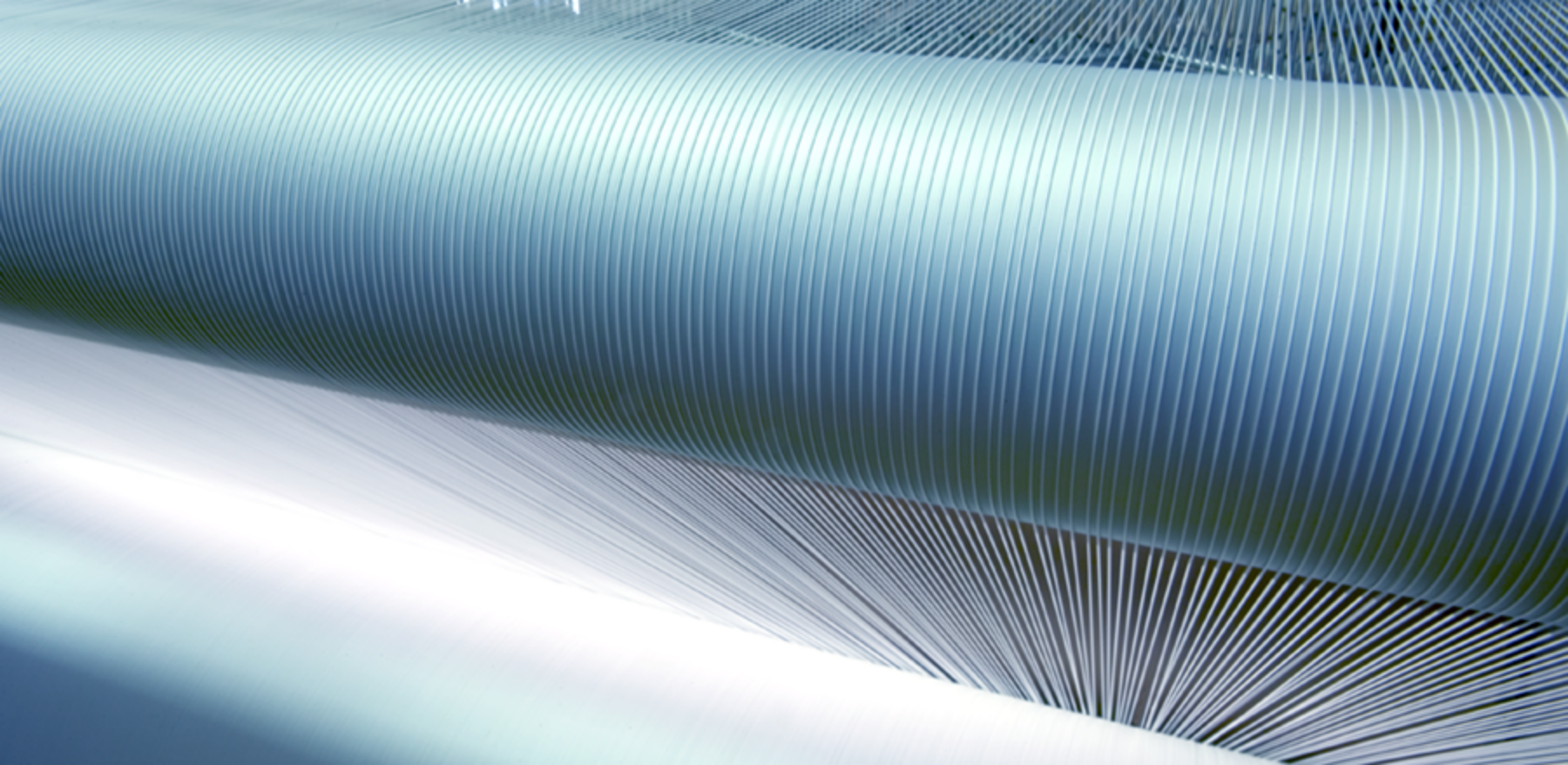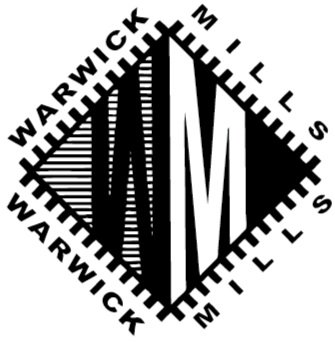
Textile Glossary
Roll Goods, Weaving, and Fabric Terms
Warwick Mills develops and manufactures advanced roll goods, high-tech fabrics, and adhesion techniques
-
Abrasion
The wear and rubbing of the surface of a fabric.
-
Aramid
A family of heat and flame-resistant fibers used in materials for bulletproof vests and radial tires.
-
Areal Weight
The weight of a fiber reinforcement per unit area (length x width ) of a tape or fabric.
-
Calendering
A mechanical finishing process where fabric is passed between heated rolls under pressure in order to produce special effects such as a glaze, polish, moiré, or embossed surface.
-
Conex®
Registered trademark of Teijin. A member of the meta-aramid fiber family that is both flame retardant and resistant to high temperatures.
-
Contamination
Undesirable material that causes poor wetting of chemical treatments such as adhesives or coatings.
-
Creep
A continuous, permanent elongation under a sustained load that results in a change in fabric shape.
-
Denier
The weight in grams of 9000 meters of a fiber filament. The lower the denier number, the finer the yarn. Denier is used in connection with most most man-made fibers.
-
Extraction
The process of removing impurities from a substrate with a vacuum.
-
Kevlar®
DuPont's trademark para-aramid fiber. Kevlar® is lighter and stronger than steel but loses its desirable properties when exposed to the sun for extended periods of time.
-
Leno Mesh
A weave where warp yarns are arranged in pairs with one twisted around the other between picks of filling yarn. This weave adds firmness and strength to an open-weave fabric and prevents slippage of yarns.
-
Monofilament
A single filament of a manufactured fiber, usually in a denier higher than 14. Monofilaments are usually spun one at a time.
-
Multifilament
A yarn consisting of many continuous filaments or strands.
-
Nomex®
Registered DuPont trademark for a flame retardant meta-aramid fiber marketed and first discovered in the 1970s. Nomex® is primarily used in the manufacture of flame-resistant clothing.
-
Polyester
A man-made fiber second only to cotton in global usage. Polyester has high strength, excellent resiliency, and good resistance to abrasion. Its low absorbency allows the fiber to dry rapidly.
-
Polypropylene
Any of various thermoplastic resins that are polymers of propylene. They are hard and tough and are used to make molded articles and fibers.
-
Roll Goods
Fabric that is rolled up onto a core after is has been woven.
-
Scouring
The washing of fabric to remove impurities before further processing.
-
Scrim
A lightweight, open-weave fabric used as a base fabric for the production of coated or laminated fabrics.
-
Spectra®
Registered trademark for UHMPE (Ultra High Molecular Polyethylene) from Honeywell.
-
Spun Yarn
A yarn constructed from a group of short staple fibers that have been cut from longer continuous-filament fibers and are then twisted together to form a single yarn.
-
Substrate
A fabric to which coatings or other fabrics are applied.
-
Teflon®
Registered trademark for Polytetrafluoro-ethylene (PTFE) fiber produced by Toray.
-
Tensile Strength
Refers to the amount of load a fiber will withstand before it breaks.
-
Twaron®
Registered trademark for para-aramid fiber produced by Teijin Aramid that has high impact resistance (five times stronger than steel), high tenacity, and excellent energy absorption properties.
-
Vectran®
Registered trademark for liquid crystal polymer fiber produced by Kuraray. Noted for its thermal stability at high temperatures, high strength and modulus, and good chemical stability. Vectran® is moisture resistant and is generally stable in hostile environments.
-
Warp
Lengthwise yarns in a fabric that are attached to and run parallel with the length of the loom and the woven fabric. Weft yarn is woven back and forth across the warp yarns.
-
Weaving
The method or process of forming a fabric by interlacing at right angles two or more sets of yarn or other material.
DuPont™, Kevlar® and Nomex® are trademarks or registered trademarks of E.I. du Pont de Nemours and Company.
